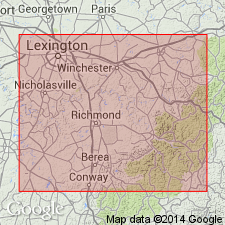
- Usage in publication:
-
- Tate layer
- Modifications:
-
- Original reference
- Dominant lithology:
-
- Limestone
- AAPG geologic province:
-
- Cincinnati arch
Summary:
Pg. 19, 212. Tate layer belongs in upper half of Fairmont bed. Consists of argillaceous limestone. Age is Late Ordovician. Recognized from central Kentucy to southwestern Ohio.
Origin of name not stated by author.
Source: US geologic names lexicon (USGS Bull. 896, p. 2119); GNU records (USGS DDS-6; Reston GNULEX).
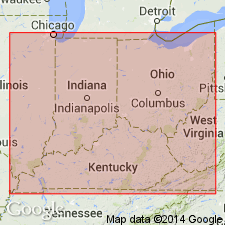
- Usage in publication:
-
- Tate member
- Modifications:
-
- Revised
- AAPG geologic province:
-
- Cincinnati arch
Summary:
Designated Tate Member of McMillan Formation.
Source: GNU records (USGS DDS-6; Reston GNULEX).
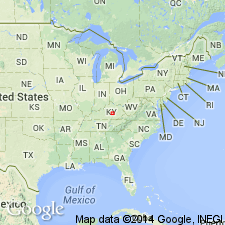
- Usage in publication:
-
- Tate Member*
- Modifications:
-
- Revised
- Dominant lithology:
-
- Mudstone
- Limestone
- AAPG geologic province:
-
- Cincinnati arch
Summary:
Designated as basal member (of five) of the Ashlock Formation (new). Includes Back Bed (new) in lower part. Chiefly greenish-gray laminated to thin-bedded sparsely glauconitic, limy to dolomitic mudstone commonly grading at top to argillaceous limestone. Thickness 30 to 80 ft. Contains few megafossils except for brachiopods and bryozoans in Back Bed. Underlain by Calloway Creek Limestone (new); overlain by Gilbert Member.
Source: GNU records (USGS DDS-6; Reston GNULEX).
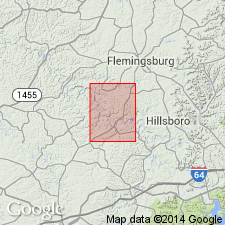
- Usage in publication:
-
- Tate Member*
- Modifications:
-
- Areal extent
- AAPG geologic province:
-
- Cincinnati arch
Summary:
Extended northward into Sherburne quadrangle as Tate Member of Grant Lake Limestone. Limestone is greenish-gray, micrograined, even-bedded, thin- to medium-bedded, argillaceous, and sparsely fossiliferous. Unit is as much as 12 ft thick.
Source: GNU records (USGS DDS-6; Reston GNULEX).
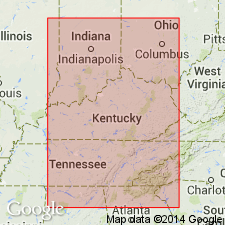
- Usage in publication:
-
- Tate Member*
- Modifications:
-
- Overview
- AAPG geologic province:
-
- Cincinnati arch
Summary:
The Tate Member of the Ashlock Formation in south-central KY consists of greenish-gray, laminated to thin-bedded, sparsely glauconitic, calcareous-argillaceous to dolomitic mudstone that commonly grades into argillaceous limestone at the top. Fossils are sparse except for some brachiopods and bryozoans. Thickness is 30 to 80 ft. Overlies the Calloway Creek Limestone and underlies the Stingy Creek Member of the Ashlock. The environment of deposition is interpreted to be very shallow, quiet, subtidal to tidal flat.
Source: GNU records (USGS DDS-6; Reston GNULEX).
For more information, please contact Nancy Stamm, Geologic Names Committee Secretary.
Asterisk (*) indicates published by U.S. Geological Survey authors.
"No current usage" (†) implies that a name has been abandoned or has fallen into disuse. Former usage and, if known, replacement name given in parentheses ( ).
Slash (/) indicates name conflicts with nomenclatural guidelines (CSN, 1933; ACSN, 1961, 1970; NACSN, 1983, 2005, 2021). May be explained within brackets ([ ]).

